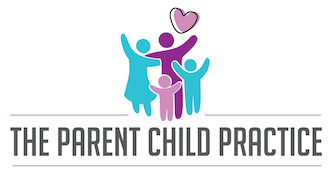Not every child learns the same way. Some children are more hands-on and others are visual learners. Finally, some children need more individual attention than others.
In thinking about all of the factors that play into learning, it makes it pretty easy to understand why different approaches could help children more than one “standard” learning style.
Of course, that doesn’t mean that any particular style of learning is better than another. It simply means exploring various methods can help parent to find their child’s particular fit. For some children and families they may desire to find out what other educational approaches exist outside of the traditional learning approach and for some families these alternative education approaches may be necessary for increasing a child’s academic success.
In this blog post, I will explore three alternative education approaches. My hope is that after learning more about these approaches, you might be able to better connect the dots as to which approach may be a good fit for your child.
Photo source: Sigmund
1. Montessori
Montessori schools are usually offered to young children, serving children age 2.5 - 6 years old. However, there are a few Montessori schools that also serve infants through high school students. Traditional daycare and preschool tend to be based on play, believing that children learn best in that way. Montessori schools believe that a child’s natural ability to play is actually their “work.”
Children in Montessori schools are encouraged to select work based on their interests but are also encouraged to explore new things. Teachers also known as “guides” allow the children to select the work they are most interested in and they have the opportunity to work closely with that work during designated work cycles. The learning is very individualized as each child often has individual lessons with their guide prior to doing work. Montessori emphasizes individuality when it comes to learning and they believe children are capable of self-directing their work when it is work they are very interested in. Montessori education is very hands-on and provides children with the opportunity to have a deeper understanding of language, mathematics, science, music, social interactions and much more and learn at their own pace.
The benefits of Montessori schools range from stimulating greater independence in children to developing higher levels of confidence and self-discipline.
Photo source: Sharon McCutcheon
2. Waldorf
The Waldorf method also focuses on child-centered learning. Waldorf education can start in the early childhood years but it doesn’t have to end there. Even children in middle school can continue to use this approach and a few places have Waldorf high schools.
Typically, the Waldorf approach is slower and more easy-going than many other educational approaches. It focuses on writing, dance, the arts, and even folk tales to help children grow and learn. In essence, Waldorf schools are very different from other schools in the country. They allow children to learn through their creativity. And that helps them to disconnect from smartphones, computers, etc. Although the schools are non denominational, they seek to bring about recognition and understanding of all the world cultures and religions.
Overall, the Waldorf method of teaching is a unique educational strategy which aims to create well-rounded students through a broad curriculum, including academics, art and music education, physical education, and emotional and social education. However, the approach doesn’t place a heavy emphasis on reading and writing until later years so for some parents this more relaxed approach is not a good fit.
Photo Source: www.ThyBlackMan.com
3. Homeschooling
Homeschooling is typically more well-known than the other approaches listed here. Perhaps the biggest benefit of homeschooling your child is that it allows one-on-one interaction. If your child has a hard time learning in groups or can’t seem to keep up with a particular pace in a traditional learning environment, homeschooling could be a positive alternative.
When you homeschool your child, the schedule is more flexible. For example, you could choose year-round schooling, if you’d like, which means your child can go at the pace that is best for them. Moreover, you also have full control over the curriculum, which allows you to focus on the life knowledge/practical skills your child is gaining, rather than getting stuck on letter grades.
Of course, homeschooling isn’t for everyone. There’s less structure, your child may not get as much socialization, parental involvement is crucial, and some people face stigma from friends and family.
—
Whatever alternative education approaches you’re considering, the important thing is putting your child’s learning style(s) first.
If you want to know more about non-traditional education programs, feel free to contact me. Your child doesn’t have to stay in just one type of learning environment. Finding the way they learn best will benefit both of you and finding a good school fit is critical to their success.





